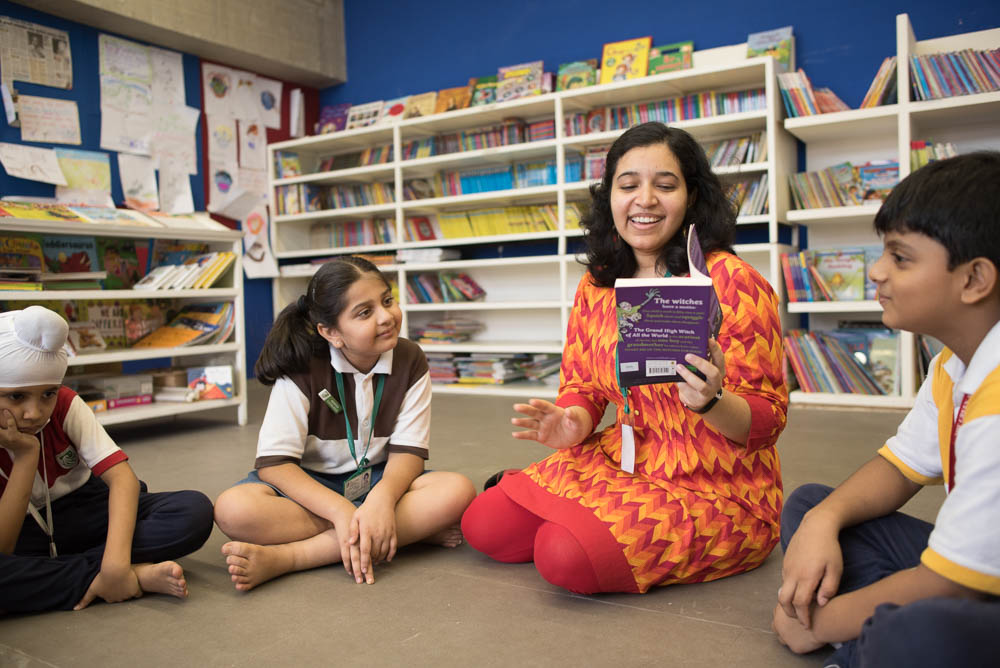A Quick Summary:
The pandemic has ensured that teachers possess the skills fourth industrial revolution – digital literacy, adaptability and good communication skills. Online classrooms differ vastly from the traditional physical classrooms. Blackboards and physical textbooks are gone and students have had to quickly adapt to online learning.
Online classrooms have quickly become the norm, where parents, teachers, and students can all come together to communicate effectively. However, teachers are still faced with the task of making online classrooms interesting, engaging as well as effective for the students. With dedication and hard work, here are a few things teachers can do to make online learning engaging and creative:
- Curate relevant videos online for students, or creating videos themselves from scratch using animations and effects.
- Create personal websites for ease in access of notes and lectures.
- Online polls and quizzes to assess how much a student has learnt.
- Real time support from teachers for lessons that students might struggle with.
- Provide emotional support, keeping an open line of communication with the students’ to gauge their mental health.
This blog was published here:
Scroll below to read the full piece.
COVID19 has ensured that all teachers can demonstrate that they possess the skills of the fourth industrial revolution – digital literacy, the ability to adapt, change and continuously learn and “soft” skills like effective communication.
How?
Traditional CBSE and ICSE classrooms seat at least 40 uniform-clad students in rows on benches facing a blackboard. Classes change every 40 minutes, and each period is teacher instructed with the support of textbooks and notebooks. However, schooling during the Coronavirus pandemic looks nothing like this.
For schools, students and teachers in India who have been lucky enough to have access to any data and technology (a smartphone will do), schooling transformed in a matter of weeks.
It started with the creation of digital classrooms where teachers and their students could come together and communicate with each other. Teachers first taught themselves how to navigate, set up and run such classrooms and then immediately set out to teach students and their parents too. In the first few weeks, this involved reaching out to individual parents and students to understand their unique situations and doubts to ensure that all students could be online and access the digital classrooms.
Next, came a much greater challenge – how were teachers going to create rich learning experiences for their students while they remained at home? Students were no longer going to see teachers every day, in the classroom with the blackboard anymore.
Teachers started by creating daily learning plans for their students. These plans ensured that students could learn at any time that was suitable to them and on any device that they could access.
To make learning meaningful and deliver the right content given where learners had left off, teachers hunted down the best and most relevant videos on the internet. When those were not the most appropriate, they edited and recorded over them to simplify, add nuance or just to customise to meet their students’ needs. Many have gone even further and created their own, be it stop motion, animated or Khan-Academy style explanatory videos. They have created presentations to share information with students and embedded interactive elements like questions and polls to ensure that learners remain focused and engaged. Teachers have even created their own websites to aggregate and organise topic wise information and resources in one place.
Creating digital worksheets has become a common exercise for most because teachers must constantly keep track of how much their students are learning. Every day teachers check on student learning via online polls, KBC style class quizzes, student video uploads where they demonstrate or talk about their learning, essays and portfolios.
Interestingly and unlike before, online assessments of student learning and the use of digital platforms are also helping teachers generate new kinds of data to understand student learning better. They are no longer limited to an attendance register every morning. Now, along with attendance, teachers can see what students have completed and what they have struggled with, often in real-time. By tracking such student data teachers are able to identify student needs such as learning gaps, their interests and engagement and then tailor lessons to meet and resolve those needs and doubts.
Teachers unique roles extend beyond teaching board subscribed subjects. Through this unprecedented time, teachers have extended themselves to check on the physical and mental well being of their students. They can be seen looking out for students online, providing emotional support, and explaining current events to children of all ages.
In the wake of COVID19 teachers have been expected to learn, innovate and completely change their approach to teaching. Their determination, ability to adapt and rise to this challenge makes them great examples of success for students who are growing up in a world that is increasingly disrupted and dominated by technology.
(This article is written by Rohan Parikh, Managing Director of The Green Acres Academy for Higher Education Digest here.)

